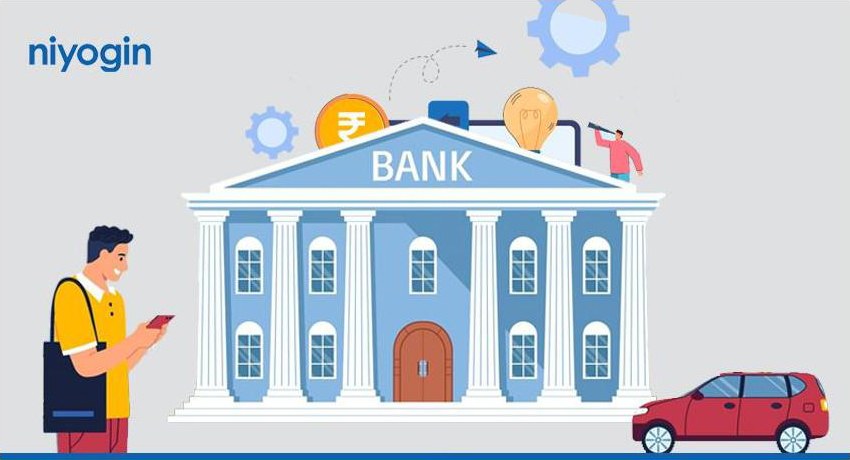Small-city micro, small, and medium enterprises (MSMEs) in India often navigate a challenging landscape, particularly when accessing crucial credit and dealing with infrastructural limitations. Despite these hurdles, these resilient businesses are demonstrating remarkable ingenuity and adaptability. The Financial Express reports that a substantial credit gap of $530 billion persists in the sector, with only 14% of MSMEs having access to formal credit, leaving 47% of credit demand unmet. Despite these challenges, small-city MSMEs are adopting innovative strategies and leveraging technological advancements to bridge these gaps. Technological Advancements Due to their limited collateral and absence of official financial records, small-city MSMEs are frequently excluded from traditional lending practices. Fintech companies are addressing this by using machine learning (ML) and artificial intelligence (AI) to evaluate creditworthiness using alternative data sources like transaction histories, bank statements, and GST filings. This method has greatly shortened loan processing times cutting the disbursal time from several days to less than six hours. Government Programs: Improving Access to Credit The Indian government has put in place several programs to increase credit availability in recognition of the vital role that MSMEs play: The Credit Guarantee Program: With a guarantee of up to ₹1 billion per applicant, this program, which was introduced in the 2024–25 budget, enables MSMEs with a manufacturing focus to purchase machinery and equipment without the need for collateral. MUDRA Loans: To make financing easier for microenterprises, startups, and small businesses, the Micro Units Development and Refinance Agency (MUDRA) offers loans up to ₹2 million. Priority Sector Lending (PSL): The Reserve Bank of India mandates that 7.5% of banks’ adjusted net bank credit be allocated to micro-enterprises, ensuring a dedicated credit flow to this segment. Infrastructure Challenges and Digital Solutions Infrastructure deficits, including unreliable power supply, inadequate logistics, and limited internet connectivity, pose significant challenges for small-city MSMEs. However, the adoption of digital platforms is mitigating some of these issues. Many new platforms facilitate invoice discounting, allowing MSMEs to access working capital by selling unpaid invoices at a discount. Moreover, the implementation of Digital Public Infrastructure (DPI) can potentially close up to 50% of the MSME credit gap in low and middle-income countries, including India, by easing credit access for an additional 16-19 million MSMEs. The Path Forward To further empower small-city MSMEs, a multi-faceted approach is essential: Formalization: Encouraging MSMEs to register on platforms like the Udyam Portal and maintain accurate financial records can enhance their credibility and access to formal credit. Digital Adoption: Encouraging online banking and digital payment systems can leave a digital trail that facilitates lenders’ evaluation of borrowers’ financial health. Capacity Building: Investing in financial literacy and operational management training can equip MSMEs with the skills needed to navigate the financial ecosystem effectively. By embracing these strategies, small-city MSMEs can overcome credit and infrastructure challenges, contributing significantly to India’s economic growth and resilience.
Tag: msme
Innovative financing models for MSMEs beyond Traditional banking
Traditional banks have long been the go-to source of funding for MSMEs. However, for many securing a loan from a bank can be a frustrating and time-consuming process, often hindered by stringent collateral requirements and lengthy approval times. This limited access to capital can stifle growth and innovation, hindering the immense potential of the MSME sector. The financial landscape is evolving, and a wave of innovative financing models is emerging specifically to address the financing needs of MSMEs. Peer-to-Peer (P2P) lending This platform allows borrowers to connect directly with individual lenders via online platforms. It eliminates the intermediary, which lowers costs and increases MSMEs’ access to capital. According to Industry ARC, the India P2P lending market size is expected to reach $10.5 billion by 2026. Besides P2P, crowdfunding has become a favored method for MSMEs to secure capital. One notable trend in the Indian crowdfunding market is the emergence of specialized platforms tailored to specific industries or causes. These platforms focus on supporting startups, social enterprises, and creative endeavors, reflecting the diverse interests and needs of Indian consumers. This trend underscores the growing acceptance of crowdfunding as a viable alternative to traditional funding avenues. Invoice Financing This model helps businesses manage cash flow issues without waiting for customers to pay their invoices. Firstly, it provides immediate access to cash flow by allowing businesses to obtain advances against their outstanding invoices, addressing liquidity challenges, and enabling timely payments of operational expenses. Secondly, it eliminates the need to wait for customers to settle invoices, thereby accelerating the cash conversion cycle and enhancing working capital management. Additionally, invoice financing does not add to the company’s debt burden, as it is not considered a loan, making it an attractive option for businesses seeking non-dilutive financing. Overall, invoice financing enables MSMEs to maintain steady cash flow, improve financial stability, and seize growth opportunities more effectively. Industry estimates suggest that the invoice discounting ecosystem in the country per month is about Rs 1 lakh crore. Supply Chain Financing Supply chain financing (SCF) involves optimizing the flow of capital across the supply chain. Financial institutions and fintech firms offer SCF solutions such as reverse factoring, dynamic discounting, and trade credit. According to the Global Supply Chain Finance Forum, the SCF market could reach $2.7 trillion by 2025. SCF benefits include improved liquidity, lower financing costs and strengthened relationships through collaboration between buyers and suppliers. Innovative financing models are transforming the landscape for MSMEs, offering alternatives to traditional banking that are more accessible, flexible, and tailored to their needs. As these models continue to evolve and gain traction, they hold the potential to bridge the financing gap and drive sustainable growth for MSMEs worldwide. Policymakers, investors, and financial institutions must continue to support and promote these innovative solutions to foster a more inclusive and dynamic economy.

